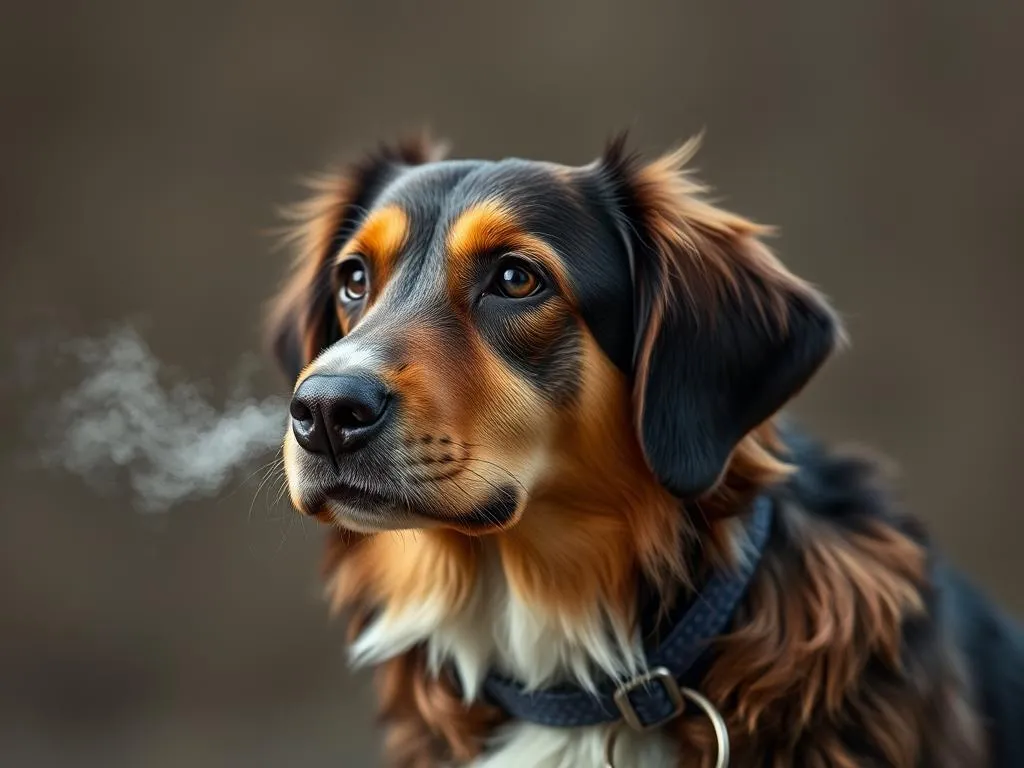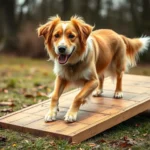
Introduction
Scent training for dogs is an engaging and rewarding activity that taps into a dog’s most powerful sense—their sense of smell. This specialized form of training involves teaching dogs to identify, locate, and respond to specific scents. Not only does it provide mental stimulation for dogs, but it also strengthens the bond between the dog and their owner. Additionally, it has practical applications in various fields, such as search and rescue, detection work, and even therapy.
The purpose of this article is to explore the nuances of scent training for dogs—from understanding canine olfactory systems to advanced training techniques. Whether you’re a novice dog owner or an experienced handler, you will find valuable insights into how to engage your dog in this stimulating and entertaining training method.
Understanding Canine Senses
The Olfactory System of Dogs
Dogs have an extraordinary olfactory system that sets them apart from humans. A dog’s nose is not just a simple organ; it is a complex structure designed for detecting scents. While humans have approximately 5 million scent receptors in their noses, dogs boast around 220 million, allowing them to perceive smells at a level that is incomprehensible to us.
The anatomy of a dog’s nose includes a specialized area called the olfactory epithelium, which is responsible for processing scents. When a dog inhales, the air passes through this area, where scent molecules bind to receptor cells. This process enables dogs to differentiate between various smells and even detect changes in scent concentration.
Why Scent Training is Effective
Dogs are naturally inclined to use their sense of smell for a variety of purposes—hunting, tracking, and social interaction. This instinct makes scent training for dogs particularly effective, as it taps into their innate abilities. Unlike traditional obedience training, which often relies on visual cues and commands, scent work engages dogs in a way that feels instinctive and rewarding.
The unique benefits of scent training include enhanced focus, increased confidence, and improved problem-solving skills. Dogs can experience a sense of accomplishment when they successfully identify scents, which can lead to a more well-rounded and happy pet.
Getting Started with Scent Training
Essential Supplies for Scent Training
Before diving into scent training for dogs, it’s essential to gather the right supplies. Here’s a list of recommended tools:
- Scent containers: These can be small boxes, bags, or even specialized scent-training kits.
- Treats: High-value rewards are crucial for motivating your dog.
- Clicker: A clicker can be used for positive reinforcement during training.
- Scent items: You can use common household items, like cotton balls soaked in essential oils, or purchase specific scent-training kits.
Safety is paramount; ensure that the items you use are non-toxic and safe for your dog. Always supervise your dog during training sessions to prevent any accidents or ingestion of inappropriate items.
Choosing the Right Environment
The right environment can make a significant difference in the effectiveness of your scent training sessions. Here are some tips for selecting the ideal training locations:
- Indoor settings: Start in a quiet room with minimal distractions. This could be your living room or a dedicated training space.
- Outdoor settings: Once your dog has grasped the basics, you can transition to outdoor areas. Parks with fewer distractions are ideal.
To minimize distractions, consider using barriers, like baby gates, during initial training sessions. Gradually introduce more stimulating environments as your dog becomes more proficient in scent work.
Basic Scent Training Techniques
Introduction to the Scent Game
One of the most enjoyable ways to start scent training for dogs is through simple scent games. Here’s a step-by-step guide to getting started:
- Select a Scent: Choose a scent that your dog is familiar with, such as a favorite treat or toy.
- Introduce the Scent: Show the scent to your dog and allow them to sniff it.
- Hide the Scent: While your dog is watching, hide the scent in an easy-to-find location.
- Encourage Searching: Release your dog and encourage them to find the hidden scent, rewarding them with praise or treats when they succeed.
Examples of Scent Games
There are numerous games you can play to enhance your dog’s scent-training experience:
- Hide and Seek: Hide yourself or a favorite toy, allowing your dog to use their nose to find you or the item.
- Find the Treat: Place treats around the room, encouraging your dog to sniff them out.
These games serve as a fun and interactive way to develop your dog’s scent-tracking abilities while strengthening your bond.
Using Scent Discrimination
As your dog becomes more adept at scent games, you can introduce scent discrimination. This technique teaches dogs to differentiate between various scents. Here’s how to implement it:
- Gather Multiple Scents: Choose two or more distinct scents, such as different essential oils.
- Introduce the Scents: Allow your dog to sniff all the scents to familiarize themselves.
- Identification Exercise: Present a specific scent and ask your dog to identify it from the others. Reward them with treats when they successfully choose the correct scent.
Training exercises like this enhance your dog’s ability to recognize and differentiate between various smells, a critical skill in more advanced scent training.
Advanced Scent Training Techniques
Tracking and Trailing
Tracking involves teaching your dog to follow a specific scent trail, while trailing is focused on following a scent left by a person or object. These techniques are commonly used in search and rescue operations. Here’s how to train your dog in tracking:
- Select a Scent Trail: Use a scent item, such as a piece of clothing.
- Create the Trail: Walk a short distance while dragging the scent item, then hide it.
- Encourage Tracking: Release your dog and allow them to follow the scent trail to the hidden item. Reward them for success.
Search and Rescue Training
Search and rescue training is a vital skill that can save lives. This type of training focuses on teaching dogs to locate missing persons or objects. Here’s a basic outline of the training process:
- Introduce the Concept: Use a familiar scent from a person you want your dog to locate.
- Layered Searches: Start with short searches in familiar areas, gradually increasing difficulty and distance.
- Practice Real Situations: Create scenarios where your dog must locate a person or object in a more complex environment.
Detection Work
Detection work involves training dogs to recognize specific scents, which can be used in various fields, including law enforcement and medical detection. The training protocols typically include:
- Familiarization: Introduce your dog to the detection scent, using a high-value reward to motivate them.
- Search Exercises: Hide the scent in various locations, encouraging your dog to find it.
- Building Complexity: Gradually increase the difficulty by placing the scent in more challenging environments.
By focusing on detection work, you can prepare your dog for specialized roles that utilize their incredible sense of smell.
Problem-Solving Common Challenges
Lack of Interest in Scent Work
If your dog shows a lack of interest in scent training, it’s essential to identify the issue. Common reasons for disinterest include:
- Lack of motivation: Ensure you are using high-value treats or engaging games.
- Overwhelming environment: Start in a quiet, familiar location to build confidence.
To re-engage your dog, try varying the scents and rewards, or incorporate play into your training sessions to keep things fresh and exciting.
Overstimulation and Distractions
Recognizing signs of overstimulation is crucial for maintaining a productive training environment. Signs may include excessive barking, inability to focus, or restlessness. Here are some strategies to refocus and calm your dog:
- Take Breaks: If your dog appears overwhelmed, take a short break to allow them to relax.
- Modify the Environment: Reduce distractions by moving to a quieter location or using barriers.
- Focus on Basic Commands: Returning to simple commands can help redirect your dog’s attention.
By addressing overstimulation proactively, you can ensure a more effective training experience.
The Role of Professional Trainers and Classes
When to Seek Professional Help
While many dog owners can successfully implement scent training for dogs, some situations may require professional input. Signs that you may need help include:
- Persistent behavioral issues: If your dog exhibits problems unrelated to scent training.
- Lack of progress: If you feel stuck or unsure about how to proceed.
- Specific goals: For advanced training in search and rescue or detection work.
Finding the Right Training Class
When seeking professional guidance, it’s essential to choose the right training class or trainer. Here are some tips for making the best choice:
- Credentials: Look for trainers with certifications in scent training or related fields.
- Curriculum: Ensure the class covers the specific skills you want to develop.
- Reviews and Recommendations: Seek feedback from other dog owners about their experiences.
Investing in professional training can lead to more effective and tailored results for your dog.
Resources for Further Learning
Books and Online Courses
Several excellent books and online courses delve into the world of scent training for dogs. These resources can provide in-depth knowledge and techniques to enhance your training efforts.
Online Communities and Forums
Joining online communities and forums can provide valuable insights and support from fellow dog owners engaged in scent training. These platforms often have discussions, tips, and shared experiences that can enrich your understanding.
Local Training Clubs
Look for local dog training clubs that focus on scent work. These clubs often offer workshops, classes, and events that can help you and your dog learn and grow together.
Conclusion
In summary, scent training for dogs is a fascinating and enriching experience that benefits both dogs and their owners. From understanding the intricacies of a dog’s olfactory system to implementing basic and advanced training techniques, the journey of scent training can deepen the bond you share with your pet while providing them with essential mental stimulation.
Embrace the opportunity to engage your dog’s natural instincts, and take the first steps toward a rewarding training experience. Your dog is eager to learn and explore—so why not start today? Whether you’re playing scent games at home or enrolling in a professional class, the world of scent training awaits.
Frequently Asked Questions (FAQ)
What breeds are best suited for scent training?
Breeds known for their exceptional sense of smell, such as Bloodhounds, Beagles, and German Shepherds, often excel in scent training. However, any dog can learn and enjoy scent work.
How long should scent training sessions be?
Training sessions should be short and engaging, typically lasting 10 to 15 minutes. Keeping sessions brief helps maintain your dog’s interest and focus.
Can all dogs learn scent work?
Yes, all dogs can learn to participate in scent training. While some breeds may have a natural advantage, any dog can enjoy and benefit from scent work.
What are the signs of success in scent training?
Signs of success include your dog eagerly searching for scents, responding consistently to commands, and displaying confidence during training exercises.









